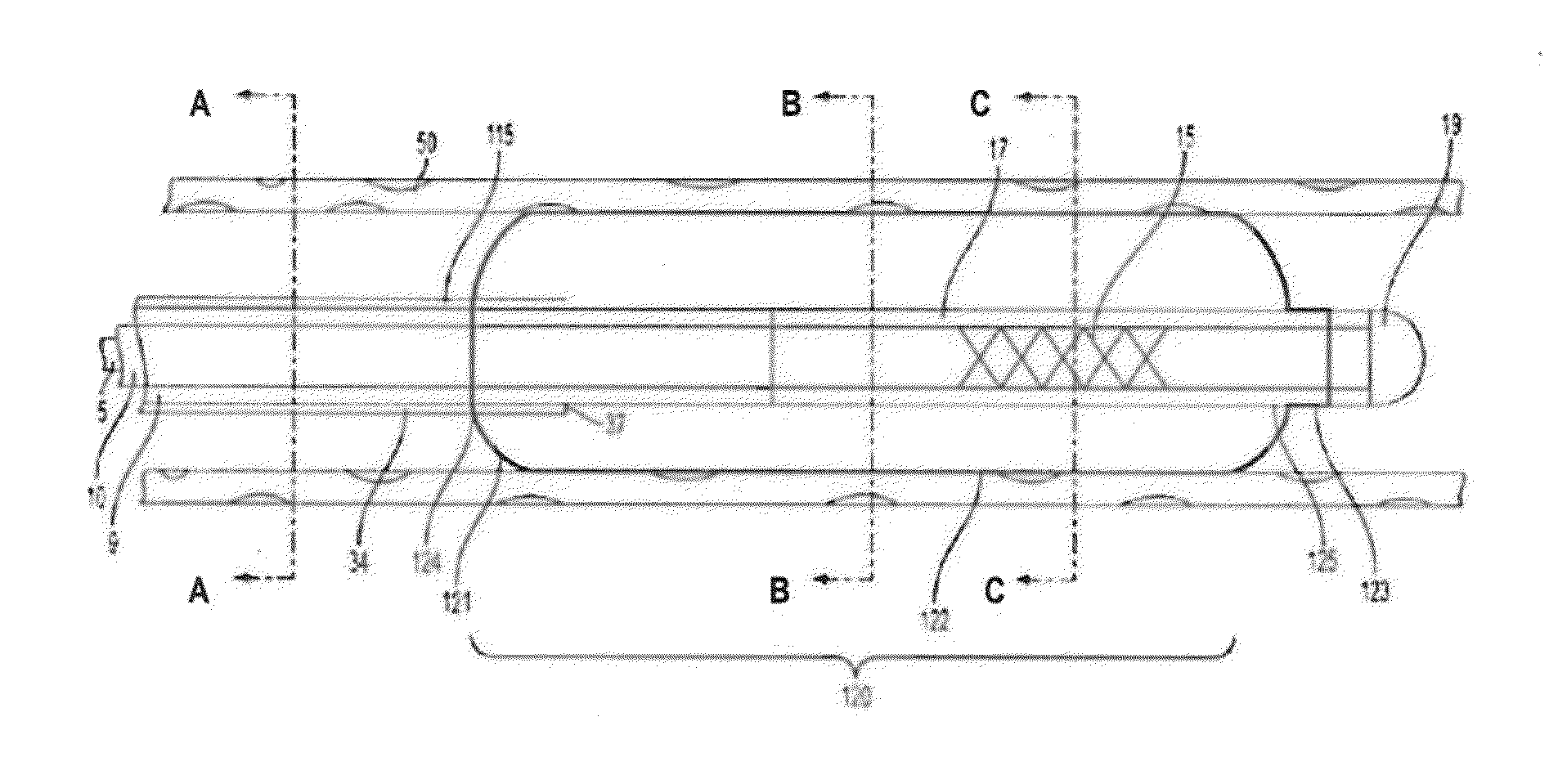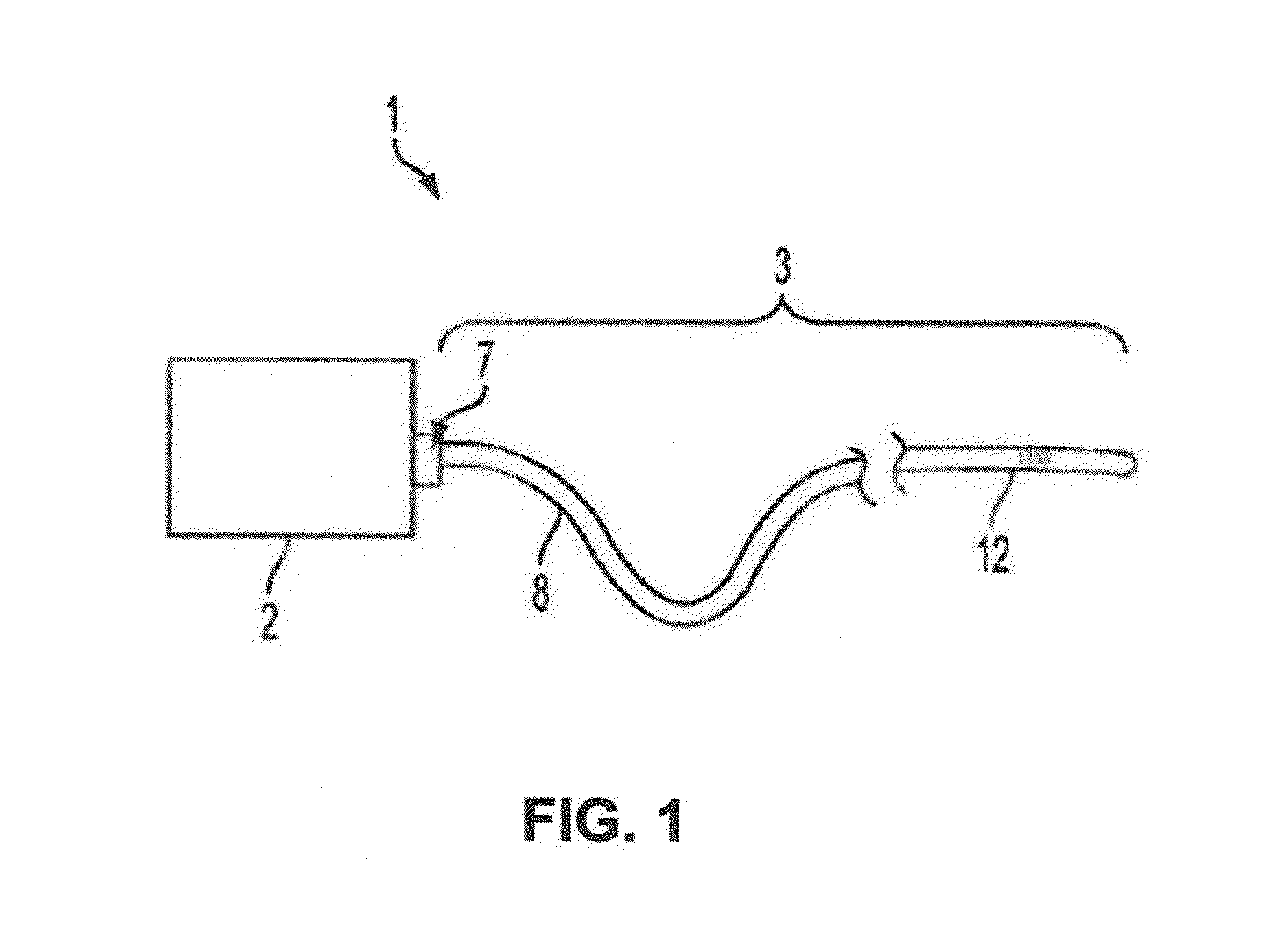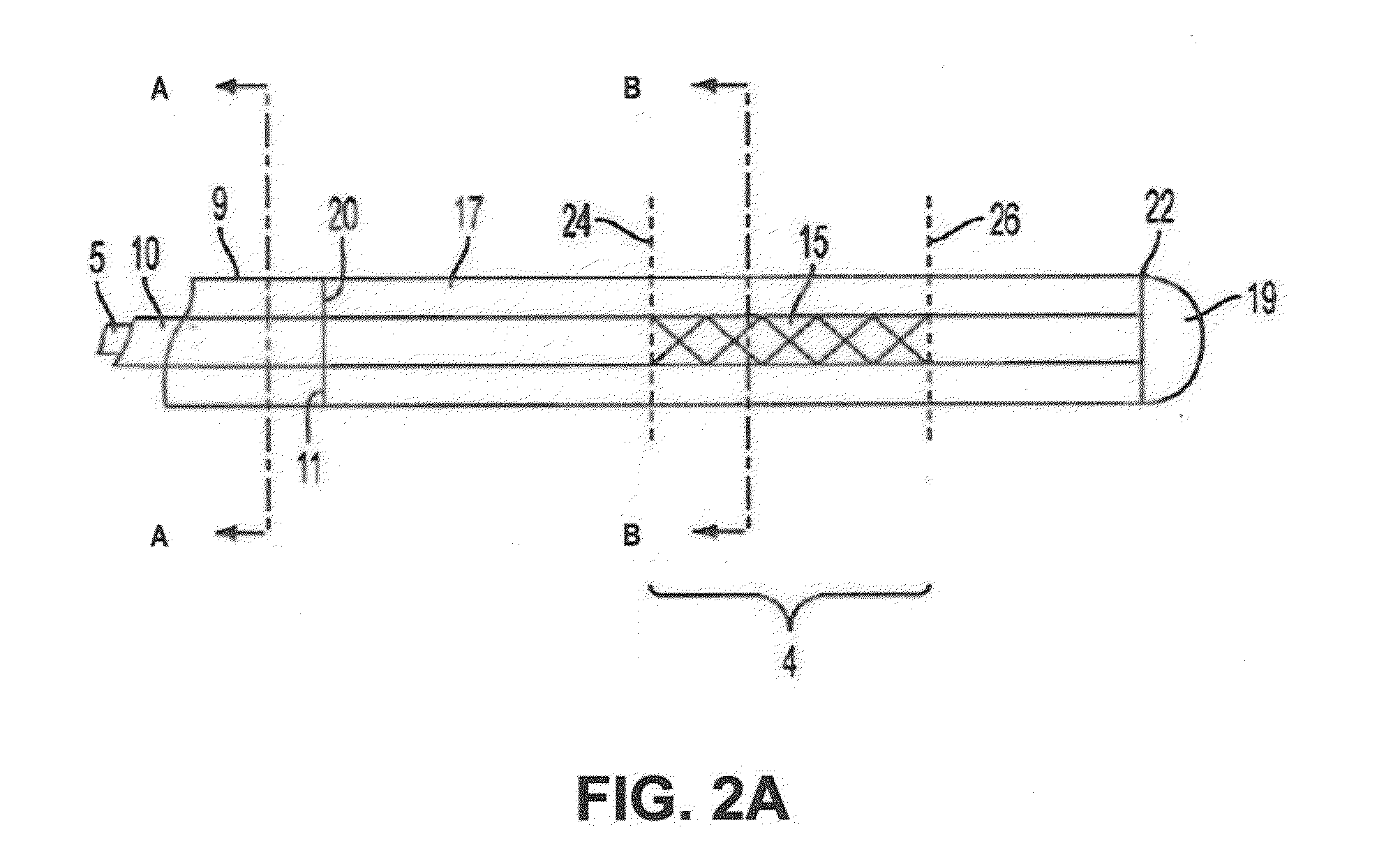Laser Device and Method of Use
a laser treatment device and laser technology, applied in the field of laser treatment devices, can solve the problems of affecting the treatment effect of patients, affecting the treatment effect, so as to reduce the power density emission, and increase the surface area of exposed fiber cores.
- Summary
- Abstract
- Description
- Claims
- Application Information
AI Technical Summary
Benefits of technology
Problems solved by technology
Method used
Image
Examples
Embodiment Construction
[0055]The following descriptions and the associated drawings describe exemplary embodiments in the context of certain exemplary combinations of elements and / or functions; it should be appreciated that different combinations of elements and / or functions can be provided by alternative embodiments without departing from the scope of the appended claims. In this regard, for example, different combinations of elements and / or functions than those explicitly described above are also contemplated.
[0056]A first embodiment of the present invention is shown in FIGS. 1-4C. The endovascular treatment device 1 shown in FIG. 1 comprises a generator 2, an optical fiber 3 having a distal portion 12 and a proximal portion 8, and a proximal connection 7 from the optical fiber to the laser generator. The device may operate in a range of different energy wavelengths, including but not limited to, 200 nm-2500 nm, depending on the laser generator. The proximal connection 7 may have a SMA or similar-type c...
PUM
 Login to View More
Login to View More Abstract
Description
Claims
Application Information
 Login to View More
Login to View More - R&D
- Intellectual Property
- Life Sciences
- Materials
- Tech Scout
- Unparalleled Data Quality
- Higher Quality Content
- 60% Fewer Hallucinations
Browse by: Latest US Patents, China's latest patents, Technical Efficacy Thesaurus, Application Domain, Technology Topic, Popular Technical Reports.
© 2025 PatSnap. All rights reserved.Legal|Privacy policy|Modern Slavery Act Transparency Statement|Sitemap|About US| Contact US: help@patsnap.com



